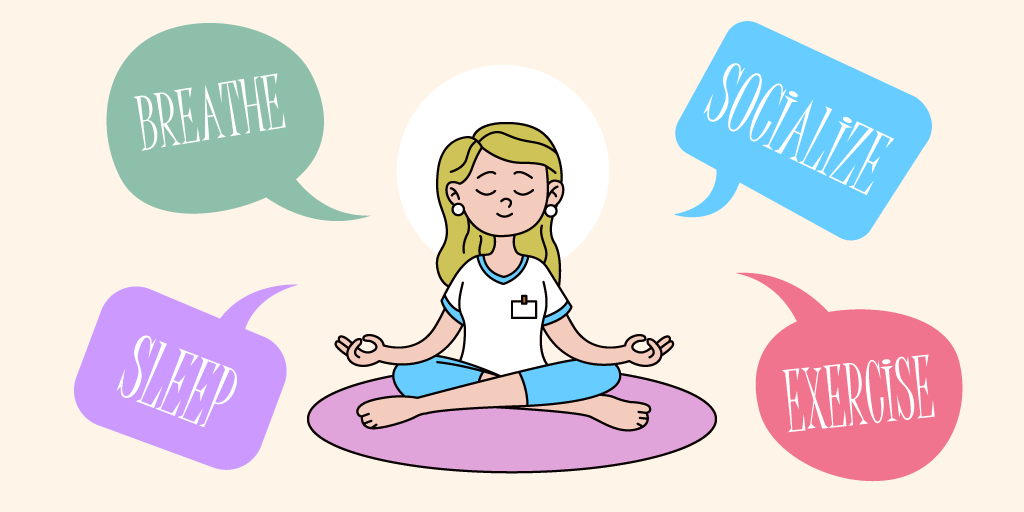Four Steps To Take Control Of Your Mind And Change Your Brain
Four Steps To Take Control Of Your Mind And Change Your Brain

Because of neuroplasticity, the scientifically proven ability of your experiences, behaviors, and thoughts to alter your brain, you are sculpting the physical form and function your brain every day with your life. Most of the time, neuroplastic change happens unconsciously as a result of thought patterns and habitual behaviors we have as we go through our lives on autopilot.
When living like this, letting your brain bully you and run the show, it can feel as if you have no control over your own mind or life. But the good news is that there are scientifically proven steps you can take to steer your mind and life…which permanently changes your brain!
You Can’t Always Believe Your Brain
If you’re like most people, your brain is filled with a constant chatter of thoughts, beliefs, and memories, which are mostly negative and from your childhood. This material is usually below your conscious awareness, cannot be directly measured or retrieved, and yet is very real and has a huge impact on your life and happiness.
In You Are Not Your Brain, Jeffrey Schwartz, M.D. and Rebecca Gladding, M.D. call these “deceptive brain messages” which they define as:
Any false or inaccurate thought or unhelpful or distracting impulse, urge, or desire that takes you away from your true goals and intentions in life.
Deceptive brain messages set up a vicious cycle which can take a devastating toll on people’s lives resulting in depression, anxiety, relationship problems, isolation, addictions, unhealthy habits, and more.
The cycle starts with a thought that causes you discomfort and takes you away from your goals and values. These thoughts are generated as part of your automatic mind, often referred to as negative self-talk or inner-critic, and are made up of implicit memories and learned beliefs from your past.
Some common deceptive brain messages are:
- I should have/shouldn’t have…
- I’m a bad person.
- I don’t deserve to be happy.
- I’m not good enough.
- I can’t do this/make it…..
- I want to escape.
The thought might be accompanied by a physical sensation or an emotional state. For example:
- Pounding heart
- Butterflies
- Sweating
- Anxiety
- Feeling hopeless/helpless
- Having a craving for something or urge to act
In an effort to ease the unpleasant sensation or emotion, you typically behave in automatic, habitual ways. In many cases, you may not even be consciously aware of your response or the motives behind it.
Some habitual responses might include:
- Using drugs or alcohol
- Eating/dieting/purging
- Shopping/spending money/gambling
- Compulsive sex
- Avoidance behaviors
- Repeatedly checking something (email, texts, door locks)
- Overthinking or worrying
The authors make the distinction between emotions and emotional sensations and stress the importance of knowing the difference. For their purposes, an emotion is based on a real event in proportional to the happening and shouldn’t be avoided, but experienced and constructively processed. An emotional sensation is a feeling based on a deceptive brain message and leads you to act in unhealthy ways. It’s like the difference between feeling sad because your pet died and feeling sad because you feel unlovable and like no one cares about you. (See blog: What’s The Difference Between Feelings And Emotions)
Four Steps of Thought Reframing
In the 1990s, Jeffrey Schwartz, M.D., a research psychiatrist, combined his interest in Buddhist philosophy with his neuroanatomy research and came up with a Four Step method for successfully altering the behavior of persons with obsessive-compulsive disorder (OCD). The Four-Step program has become the established treatment for OCD and has been verified to physically change brains in studies using brain scans.
The good news is that the thought reframing process can be used as a self-treatment to retrain any brain to get rid of mild to moderate unwanted, unhealthy thought patterns and behaviors. When symptoms are severe and debilitating, people might not be able to focus their attention enough and would benefit from the method as part of a structured, professional therapy program.
Thought Reframing Worked for Me
I used The Four Steps to change a lifetime of unhealthy thinking patterns and behaviors that culminated in a suicide attempt. While I wouldn’t say I had OCD, I definitely had the behavioral tendencies, through-the-roof anxiety, and obsessive thoughts. After reading Schwartz’s book, Brain Lock, I had reminders of the four steps posted all around — on the refrigerator, in my meditation corner, on the bathroom mirror, and even on the dashboard of my car. (Read more of my story)
Every time one of those nasty thoughts that led to depression and the suicide attempt popped into my head, I’d march through the four steps. I was determined that I wasn’t going to be a slave to my thoughts anymore and let my mind run and ruin my life. Eventually, it worked.
The four steps, which is really just a formula for applied mindfulness, involves learning to focus your attention and modify your thinking in beneficial ways that support and empower you. Over time and with repetition, the process changes your brain physically and operationally through neuroplasticity. The Four Steps are:
Relabel
Become aware of and identify deceptive brain messages and uncomfortable sensations. Consciously put a label on your experience as it is happening. “I’m feeling anxious right now because I’m thinking about all that could go wrong.” “I’m feeling isolated because I believe I’m unlovable.”
Reframe
Change your perception of the importance of the deceptive brain messages. Realize that they’re simply products of your brain that you don’t have to believe. You do this through mindfulness and consulting what Schwartz refers to as your “wise advocate.”
Reframing can also be accomplished by recognizing your cognitive distortions, such as black and white thinking and reasoning with your emotions. For example, if you’re having the sensation that something is wrong, you acknowledge the feeling and ask yourself “Is something really wrong or is it just my brain?” Something may well be amiss, but don’t automatically conclude that it is just because of the feeling.
Refocus
In the first two steps, you clear your cognitive field. Then, you focus your attention in the moment in the direction you want to go and consciously do something constructive. This step can be as simple as directing your thoughts back to the present or engaging in an activity that is healthy and productive — even while the deceptive brain messages are still there and bothering you. Your brain is rewired over time as you repeatedly refocus your attention.
In the article “Pay Attention,” Dr. Rick Hanson Ph.D. writes :
In particular, because of what’s called “experience-dependent neuroplasticity,” whatever you hold in attention has a special power to change your brain. Attention is like a combination spotlight and vacuum cleaner: it illuminates what it rests upon and then sucks it into your brain – and your self.
Revalue
When you complete the first three steps regularly, the fourth step begins to happen almost automatically as the result of new thinking patterns. You begin to see thoughts, urges, and impulses for what they are: sensations caused by deceptive brain messages that don’t benefit you.
In the video, “4 steps to changing your brain for good,” Dr. Schwartz says that this final step
…actually wires your wise advocate into your habit center. This is basically a positive feedback mechanism that allows you to rewire your brain continually in a more and more adaptive functional way which is the hallmark for self-directed neuroplasticity.
Your Biology Is Not Your Destiny
Just because you have had thoughts and urges or behaved in certain ways in the past — for most of your life even — doesn’t mean that you have to always be that way. You have the power to change your life and your brain. Your biology, including your brain, cells, and genes, can be majorly influenced by how you live. The authors propose that your ally in making a shift is your mind. While there are many definitions of the mind, the authors define it as: “The mind is involved in helping you constructively focus your attention.”(See blog: What’s The Difference Between The Mind And Brain?)
When you learn how to focus your attention in positive, beneficial ways that empower you, you actually rewire your brain to support those thought patterns and behaviors.











Share On: